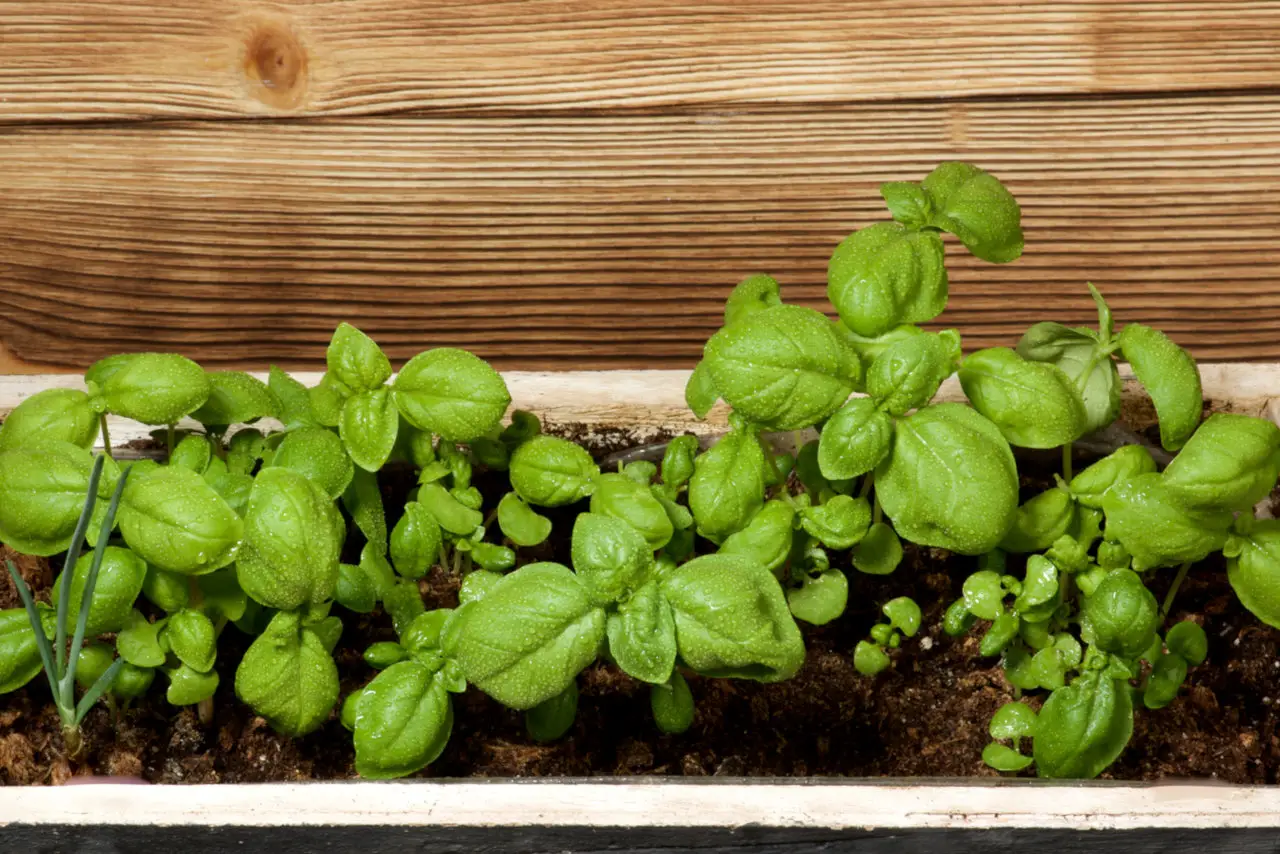In the cultivation of herb plants in the hobby garden, basil occupies a special position. If you want to successfully grow basil yourself, you should take some important aspects to heart when planting and growing it.
How to Pre-Grow Basil Properly
If you want to grow this heat-loving herb yourself, it is best to do so indoors from the end of March to the beginning of April.
This is how you proceed:
- Fill a seed tray with peat sand, coconut fiber, or seed soil.
- Sow the seeds without covering them with substrate.
- Moisten them with a fine spray.
- Wait for germination in a half-shaded window location at 68-77 F (20-25 °C).
- From a growth height of 2 inches (5 cm), prick the seedlings and keep them constantly moist until planting in the open ground.
What Site Conditions Should Be Considered for Basil?
To be able to grow basil profitably, a sunny location is primarily important. In addition, a location protected from rain and drafts is advantageous.
In the bed, choose a planting site where no basil has been cultivated in the past 2 years, as a precaution against fungal spores lurking there.
On the windowsill, in addition to plenty of sunlight, good air circulation is important.
In What Soil Does Basil Grow Optimally?
It is one of the unexpected attributes of this herb plant that basil is a heavy eater. Thus, the composition of the soil depends on these factors:
- Nutrient-rich, humus-rich, deep soil
- Loose, fresh-moist, and slightly sandy
- An ideal pH of 6.5 to 7.5
Thus, if you are planting basil in a pot, lean herbal soil is unsuitable. Instead, use compost-based potting soil optimized with sand, perlite, or expanded clay.
When is Planting Time for Basil?
The Mediterranean herb does not tolerate temperatures below 54 °F (12 °C). For outdoor cultivation, therefore, the second half of May is primarily suitable in colder regions, when there is no longer any fear of late frosts in the soil.
If you grow basil on the balcony, place the tub outside during the day from April. From mid-May, the plant can also stay outdoors at night.
How to Plant Basil in the Bed and Tub?
If you want to grow basil in your garden, carefully weed the soil at the chosen location. Then rake the soil well and remove roots or stones.
Then continue in this way to plant your basil:
- Dig a planting pit with twice the volume of the root ball.
- Enrich the excavation with sifted compost, granulated cattle manure, or humus.
- At the bottom of the pit, create a 1-2 inches (3-5 cm) high drainage of grit, expanded clay, or clay shards.
- Fill in a handful of substrate and plant the potted basil in it.
After planting, the young plant should not be deeper than before in the growing pot. Last but not least, water your basil generously.
You should proceed similarly when planting basil in a pot, using the recommended substrate.
Then give the young basil plants a few days to get used to the full sun. Therefore, put pots in partial shade for 3-4 days and shade bedding plants with a parasol.
What Are the Best Propagation Methods for Basil?
Apart from sowing, basil offers uncomplicated propagation by means of cuttings.
To do this, cut from a vital mother plant 4-6 inches (10-15 cm) long shoot tips, which you should defoliate in the lower part.
Placed in a glass of water, the cuttings will root within a few days. Now you can plant them in a potting soil-sand mixture so that the cuttings quickly develop into a vigorous young plant here.
How to Harvest Basil
In growing basil, 6 to 8 weeks usually pass between sowing and a first harvest. Do not pluck off individual leaves, but harvest whole shoots at a length of 2-3 inches (5-7 cm).
Cut off the tips of shoots continuously, this measure at the same time stops flowering. Once your basil flowers, the leaves take on a bitter taste and the plant dies.
How to Harvest Basil Seeds
Provided that you want to get the seeds for propagation by yourself, the basil should first be allowed to bloom.
While the pretty flowers slowly withered, the small seed stalks develop underneath. Pick off the withered leaflets.
To harvest the seeds, proceed as follows:
- Cut off the withered flower stalks
- Wipe off the fruits and flowers with your fingers over a bowl
- Grind the flower-seed mixture between the palms of your hands
Sift this mixture until the black seeds remain. You should let these dry for a few more days in the air, and then store them in a dark container in a cool cellar.
With What Plants Does Basil Do Well and Not So Well With?
Basil is an immensely useful planting partner in the bed.
In association with tomatoes, vines, peppers, beans, corn, and onions, the aromatic herb plant drives away pesky pests and sneaky fungal spores.
Only with conspecifics, such as dill, lemon balm, savory, or thyme, the basil does not get along so well.


